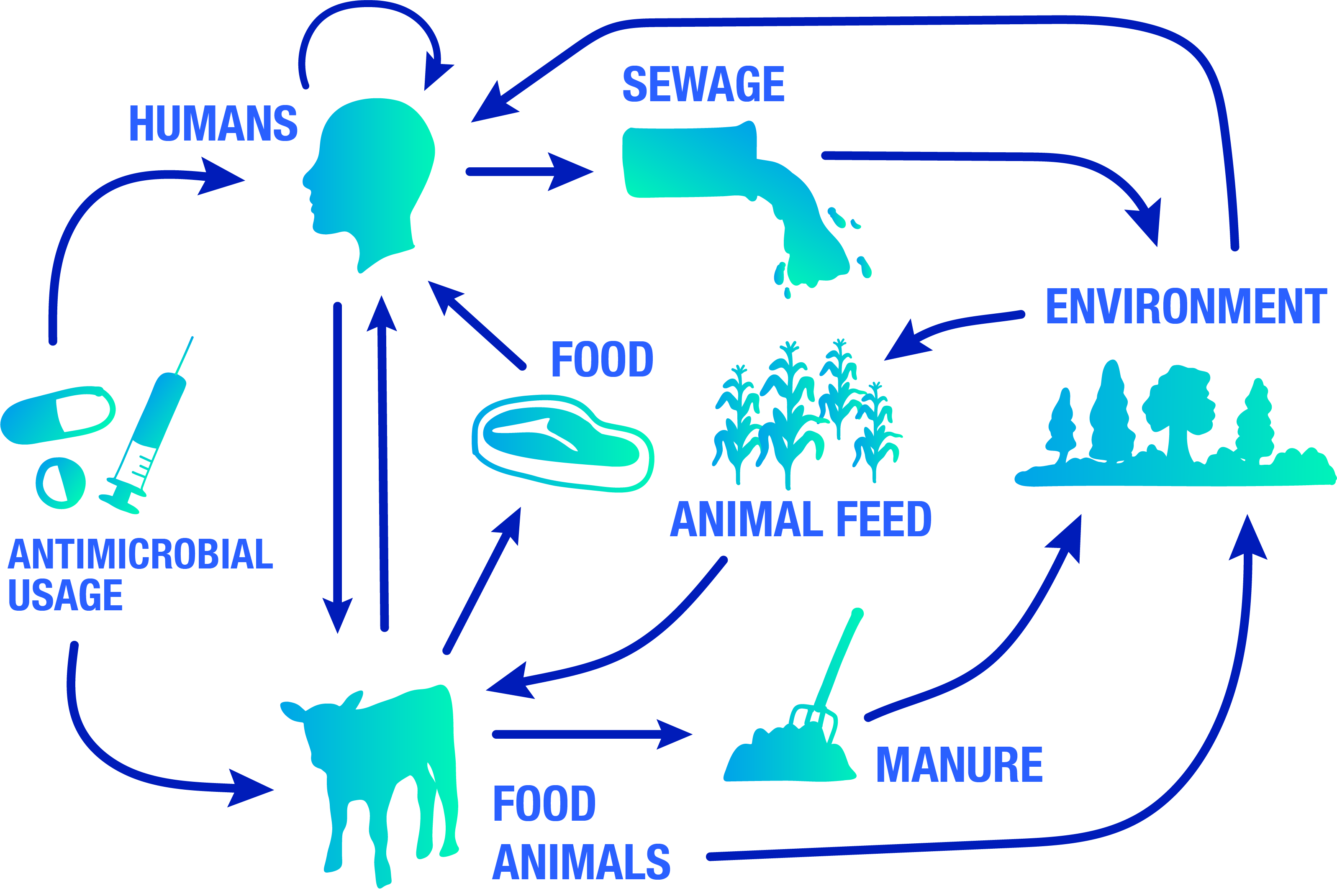Antimicrobials & the Environment
Benchmarking Antimicrobial Use
& Antimicrobials in the Environment
Page 07 /
Antimicrobial resistance in food animals is interlinked with antimicrobial resistance in other populations, particularly in humans, and the wider environment. The interplay among these populations is especially important in the development of antimicrobial resistance, as the links between humans, animals, and the environment not only allow for the movement of bacteria but also different mobile genetic elements (which can transmit resistance to different bacteria) and antimicrobials themselves.
)
Exposure to Antimicrobial Resistant Bacteria in the Environment
Resistant bacteria can be introduced into the environment through a variety of routes, including but not limited to various kinds of human waste and animal feces. People may become exposed to both antimicrobial susceptible and resistant bacteria in the environment through several different routes1, some of which also apply to exposure of livestock, pets and wildlife:
-
Recreation in contaminated surface water
-
Consumption of contaminated drinking water
-
Consumption of fresh produce, or shellfish
-
Inhalation of aerosols
The natural environment is a plausible pathway for antimicrobial resistant bacteria to be transmitted to humans and farmed animals.
Development of Antimicrobial Resistance in the Environment
The minimum inhibitory concentration (MIC) refers to the concentration of an antimicrobial that is needed to inhibit the growth of, or kill, a target pathogen. However, when the concentration of the antimicrobial is below the MIC, this can lead to selection for and survival of bacteria that are resistant to certain antimicrobials. The varying concentrations of antimicrobials found in soil, sediment, and organic matter are thought to play an important role in the selection of antimicrobial resistant bacteria. In experimental studies, weekly exposure of bacteria to sub-lethal concentrations of diverse antimicrobials leads to selection and persistence of more common, frequent small-effect mutations that further increases resistance in the bacterial population.
Contamination of the Environment with Antimicrobials and Antimicrobial Resistant Bacteria
There are three major pathways identified in the literature for antimicrobial residues and resistant bacteria to enter into the environment2:
-
1. Municipal and industrial wastewater and sewage sludge
-
2. Spreading of animal manure
-
3. Aquaculture
-
Also of importance: Improper disposal of antimicrobials